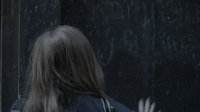Possibly the most important collaboration on the film is the relationship between director and actor. Why is that? Well you have worked with your script writer to perfect the story, you have brought your vision to life with the design team and the shot is looking perfect thanks to your DOP and lighting engineers. But what is the center point of all the preparation? That is the actors. People look to the actor as the center piece of a film. It's often the reason why they will bother to go to there local cinema and buy a ticket. However, you could get the look of the film perfect, it could sound incredible, but if your actor/actress isn't giving a good performance, It can ruin the whole project.
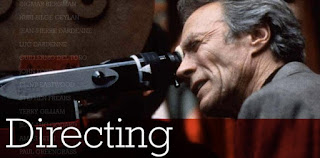
Think about the importance of getting the best out of your actor like this. An awful lot of people will not notice the quality of the picture. They don't notice a fancy jib shot or the slider which passes through walls, the lighting or the set design. The common joe in the street will not be looking at these things. They will be looking to see if they believe the actors emotions. Granted, those other things add to create an amazing movie, but without your actor delivering, it is all for nothing.
I have been lucky enough to be able to work with a variety of actors and actresses, some professional and some amateur. This has been on a number of projects including client promotional work, short films and music videos. Personally I don't have a preference on which pool of actors I like to work with, both have there positives and negatives. To show some on these I have produced two tables on some of the pros and cons of working with professional actors and amateur.

Of course, these are just from my experience and aren't universal. Also, there are times where amateur actors act like professionals and pros act like amateurs. However, overall this is what I have gleaned.
From my time working actors I have learned a lot about how to get the best performance from them. The first and biggest has to be making them feel comfortable with you. There has to be a relationship between a director and actor. They have to trust every word you say, even when asking them to do sometimes odd things. From the second they walk into the audition, you are building that connection and trust. You then cultivate that by giving them time before the shoot. A simple cup of coffee and a chat can go along way.
Once you have the trust built, it's time to get them comfortable on set. A simple way to do this (which can be done on any budget) is give them a seat somewhere which is reserved just for them. Away from the main set if possible. This means they have somewhere to go between takes to rest or grab a drink. It's a little thing but the feed back I have gotten from actors shows how big an impact it can have.
Although I am a big believer in "learning by doing", a great way to improve in anything is to learn from the best. I have been fortunate enough to attended two fantastic actor/director workshops which have taught me a shed load.

The first workshop was put together by the LFA (London film academy) hosted by Carolina Giammetta, an actor director how has seen life from both sides of the camera. She has stared and worked on such shows as The Bill, Doctors, Causality and many many more. The biggest point she raised was one that I have already covered. Making your actor feel comfortable. She made the point that fear will lead to a bad performance, so building repore is key.
She also made the whole group do a very odd, but interesting activities. We were told to go around the room, point to as many objects as we could while, out loud, saying what they were e.g. point at a chair and say "CHAIR". Easy enough. The second time however, we had to point at an object, then to another object and say the name of the previous object e.g. points to the chair, then to a light and saying "CHAIR" while pointing at the light and so on so forth. quite difficult. The third time round, we all had to, again, point at objects around the room and simply say the first thing that came to mind. e.g. points at chair and says "FISH" etc. Once that was over we went back to are seats wondering what that was all about.
The point of the experience was to show what it's like for an actor when they just know the lines, when they are given tweeks by the director and then when they are given no direction at all. Calling a chair a chair is the same as learning lines or how they will perform the part, it becomes second nature. The director tweeking that performance then becomes like calling an object the previous objects name. Harder but do able. Then there was the last round of saying what ever came to mind. What was fascinating about it was the noise level. The first round had been relatively loud, everyone confidently calling a chair a chair, the second was slightly quieter as people struggled to get into the mind set. The third however, was all over the place! people were either overacting or going quite so that people didn't hear what they were saying.
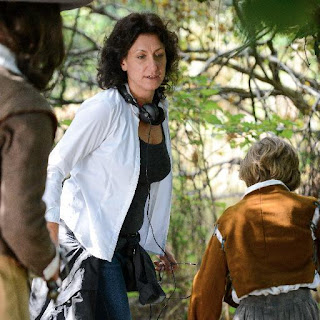
The principle of this is to show things from the actors perspective, and what bad/no direction can be like. You either get people massively over playing, or people keeping it low-key, shrinking back. This has been a big help in homing my director skills, now keeping in mind what is going through the actors head.
Another small point that I feel had the biggest impact on me was a very simple one. That is, once you call cut, go and commend your actor straight away. It is very easy to stand staring into the monitor with your DOP, the lighting engineer and wardrobe depart with the look confusion on your face as you try and hon the perfect shot. For an actor this can be very unsettling for a poor actor, standing there with 10+ people staring in their general direction. The only thing going through there head will be "Oh no, was it me, did I screw up, people all stop staring at me not saying anything. I wonder what they are whispering about, I bet it's me. I hate this". Taking a few seconds to commend the actor after a take, before then talking to crew is a simple but great tip.
The second workshop I attend was done by the head of the drama department at Bath College, -Name here-, well known for it's creative courses. The workshop was all about giving your actor a background on where the character was previously to the scene and what the objected for that character is. This all leads to the actor getting more into the mind set of his/her character and what they want out of the scene.

For the workshop, some of the class were picked out to play actors in the scene. They were then given a scenario they had to improvise. After one take of that set up, the scenario was then expand or one or more of the characters objects were changed. For example, an assassin who was just interested in killing one guy, now needs to keep him alive. Changing the objective had huge implications on how the part was played. This was defiantly I something I took on board for future projects.
Another small thing Dylan did that I took on board was taking an actor aside, and giving them a little bit of direction that the other don't know about. For example, telling an actor how would normally let the chair he is using as a footstool be pulled away, to tell whoever tries to take it away not to with some force. This little bit of improve can create hugely tense moments that we never scripted. It also shows how well your actors know there characters. A pro who is amazing at this is Leonardo Dicaprio. He can take a situation that wasn't scripted and run with it. A great example of this is in the
Quentin Tarantino masterpiece Django unchained. The scene in question is where Leos character goes on a rant, completely losing it. During the shot, Leo cut his hand after smashing some glass (also not in the script). Instead of stopping, he ran with it. Rubbing his bloody hand all over on the extras face, adding to the insanity of the character.

The first part of the actor director relationship begins at the audition. Although this is you are judging to see if a person is right for the apart, you don't want to come off judgmental. That's why I much prefer to do the whole audition standing if possible. It gives both yourself and the actor space to be able to move while talking, creating a more relaxed environment. You want the actor/actresses to feel comfortable. They will almost always been harboring nerves of some kind, even the pros get nervous. As the director, it's your job to get them to relax and give you their best. Sometimes a simple smile and a "how are you feeling" is enough. Other times, you have to take a little more time to let them get used to you.
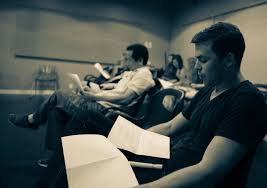
Once they are calm, I like to ask them a few general questions to get them to open up a little bit. A good one to use is what is your favorite role to play, what kind of roles do you feel most comfortable, what's the funniest thing that has happened to you on a set etc. You can also tell them a little bit about yourself as well. A little bit of Quid pro quo (latin, something for something) goes a long way.
Once repore is built I either do one of two things. If they have had a copy of the script prier to the audition then we will go through a scene or two with them. This can be really useful to see how they play the part and what they bring to it. It can also be useful to ask what they would change, sometimes their idea is much more effective than your own.
If they haven't had a copy of the script, then we do some improve. I give a scenerio e.g. sat on the bench in a park, and then we play with the situation. With each take, adding or changing something to the character whether it's a trait, an objective or a background. Seeing how an actor runs which each character type will given you insight into their strengths and weaknesses. This may determine what role you put them in.

Our film, SCRIBES, has only two roles. A male and female who play bother and sister. This set up came with it's benefits. For example, not having to cast for a lot of different roles meant we could see more people, widening are search pool. Leading are audition team was myself, my producer James Marcelle and Director/friend of mine, Ryan Hiller. James took care of setting up the meetings, I made the agenda and did most of the talking while Ryan took notes and helped with the improve performance segments. I feel this worked really well for us. The last thing I wanted was to have to many people staring at the talent which would cause them to be uncomfortable.
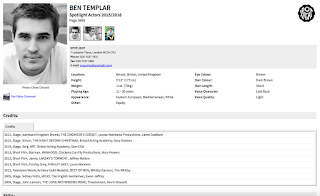
For are lead we came to the conclusion that
Ben Templar was the best fit for the lead of Daniel. We went through some scenes with Ben and he just got the character straight away. He was adding things, giving great feed back and overall blew up away in the audition. Plus, we heard about him through recommendation from an actress who I had worked with during a client gig. She was 100% right, he was perfect for the part. He is a professional actor with experience working on a film set. He has also done something similar to what we needed from him before, so we knew he could deliver the leave of emotion required by the role.
For the supporting role we had to go with
Georgie Rodriquez. We were originally going to out source the role to another professional actor but after giving a short presentation to the drama students and auditioning her it was clear she was right for the role. The whole crew was smitten with her. Even though she isn't a pro just yet, she is almost there already! As she didn't have a copy of the script I decided that during the audition we would do some improve. She handled each different sceniro very well, only needing slight nudges in the right direction to get the performance I had in my head. She was easy to work with and really stood out from the crowd.

Before the shoot began, I made sure that both actors had there own reserved seats, as I previously mentioned it's a small but important detail. Both arrived on time which showed real professionalism on both there parts. James took their lunch orders, and I went through with both of them what the plan for the day was. After the finishing touches we made to the set, I asked both Ben and Georgie to go inside and learn the environment, seeing as this is "their apartment" I needed to be sure they knew it's layout. Once they were happy, we began shooting.
Both worked amazingly well together. The actors hadn't been able to meet before the shoot meaning this was the first time they had spent together. Luckily, they got on like a house on fire and really got into the brother sister relationship dynamic. Very rarely did I have to change their performances. When I did, they took the direction on board. I felt the collaboration between me and the actors was fantastic. We fed of each other, throwing out suggestions and playing with ideas. It felt like mad science as we experimented with different ways performing the lines.
As we only had a day to shoot the majority of are film, there was no time to waste. We didn't have time on the schedule to be taking 15-20 minute breaks. All we had was a 45 minute lunch break. The cast and crew both dealt with the craziness amazingly well. I couldn't have asked for more from them.
I tried to use some of the techniques I had learnt from the workshops. The two main ones were taking a few seconds to commend the actor after a take and having the actor think about the objective of a scene. This helped keep the actor happy and focused on where the character was going.
Again, I brought Ryan Hiller to the shoot for the express purpose of keeping the actors minds on the film. He is a easy person to talk and people tend to warm to him quickly meaning he had no problem building repore with the actors. He then used that to be a bouncing board for concerns that they were having. He then fed those concerns to myself or James and we then dealt with them. This was a huge help as often I had to be in 3 places at once on set meaning I couldn't always give the actors all my time. He also ran lines they weren't sure of while we setting up a shot.






































